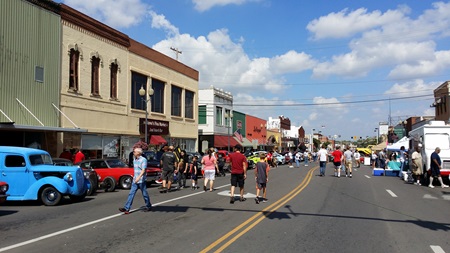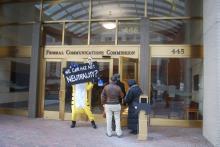
Butler Electric Cooperative and its Velocity broadband subsidiary say they’re making meaningful progress in bringing fixed wireless access (FWA) — and ultimately fiber optic broadband — to long-neglected sections of rural south-central Kansas. It’s the latest example of electrical cooperatives playing a leading role in the longstanding quest to bridge the digital divide.
Butler Electric Cooperative, which provides electrical service to 7,000 meters via 1,850 miles of transmission and distribution lines, created Velocity in 2018 as part of the cooperative’s expansion into broadband access.
The service currently provides fixed wireless access to roughly 5,500 rural Kansas residents, long left out of reach of traditional cable, fiber, or DSL due to the logistical challenges and high cost of rural deployment.
The company’s current service tiers range from a 15 megabit per second (Mbps) downstream and 3 Mbps upstream tier for $60 a month, to a 100 Mbps downstream, 10 Mbps upstream tier for $84 a month. Both tiers feature a one-time installation fee of $200. The higher pricing generally reflects the higher prices of deployment to remote, rural areas.

Velocity CEO Kevin Brownless tells Telecompetitor that the company tries to keep consumer-facing pricing as close to cost as possible, and that Velocity and Butler plan to drive fiber into these markets over the coming years thanks to federal subsidies.
“The lack of sufficient Internet in the area was close to the co-op’s core mission, which is to provide services that improve the quality of life for our members,” Brownlee tells the outlet. “Our co-op board took the lack of availability as a call to action to provide reliable Internet service to rural members and households in the area.”
Back in January, Butler received $9.8 million in broadband deployment grants courtesy of the Kansas Capital Project Funds (CPF) Broadband Infrastructure Program, itself made possible by federal Coronavirus relief legislation. The grant money will be used to help deliver fiber access to an additional 4,300 rural Kansans over the next few years.

State officials indicate the multi-county region targeted by that funding is 83% unserved, with 50% of the coverage area classified as economically disadvantaged. Data routinely indicates that while access is a major obstacle to broadband adoption, affordability is just as important.
The coop is quick to note that an historic round of federal funding for broadband access made possible by American Rescue Plan and infrastructure legislation was hugely motivational in expanding into rural fiber deployment.
“There’s a lot of money that’s going to be bestowed on fiber projects, regardless of who’s in the White House,” Brownlee says. “So, we’ve decided to get into the fiber business to better position us for the long term, strategically. It’s not an indication of current service levels delivered by wireless and more about the fact that fiber is extremely robust and better positioned to meet bandwidth needs that will only grow over time.”
U.S. cooperatives currently serve around 42 million Americans, including 92 percent of counties facing persistent poverty. A growing portion of them are taking the hard lessons learned more than 100 years ago from rural electrification, and applying it to broadband access–much to the benefit of rural Americans long left on the wrong side of the digital divide.
Inline image of downtown El Dorado Kansas courtesy of Wikimedia Commons, Attribution 3.0 Unported
Inline image Butler Electric Cooperative headquarters courtesy of Butler Electric Cooperative







